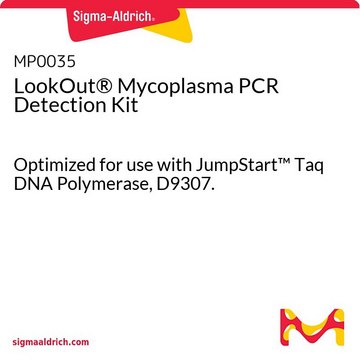NA2010
GenElute™ Blood Genomic DNA Kit
sufficient for 70 purifications
Synonym(s):
Blood Genomic DNA, Gen Elute
About This Item
Recommended Products
usage
sufficient for 70 purifications
Quality Level
technique(s)
DNA purification: suitable
storage temp.
15-25°C
room temp
Looking for similar products? Visit Product Comparison Guide
Related Categories
General description
Application
- to extract DNA from samples of large granules (LG) and smaller granules (SG) obtained from vasectomized rabbits
- to isolate DNA from the blood samples
- to extract whole blood DNA from the left blood cells
- restriction endonuclease digestions
- PCR
- Southern blots
- sequencing reactions
- cloning
Features and Benefits
- Starting material: Up to 200 μl of fresh or aged blood
- Expected yield: Up to 10 μg
- Elution volume: 400 μl
- Time required: <40 min
- A260/A280 ratio: 1.6 - 1.9
- Compatible with many anticoagulants, including EDTA, Heparin, and Sodium Citrate
- Typical yields 4-10 μg from 200 μL of whole blood
- Pure genomic DNA with a A260/A280 ratio between 1.6 and 1.9
- Isolate DNA up to 50 kb in length
Principle
The expected yields of genomic DNA will vary depending on the amount and nature of the starting material used (for example, 4 to 10 μg of RNase A-treated DNA can be isolated from 200 μl of fresh whole blood in less than one hour). DNA purified with this kit has an A260/A280 ratio between 1.6 and 1.9 and can be up to 50 kb in length.
Other Notes
Legal Information
recommended
related product
signalword
Danger
Hazard Classifications
Acute Tox. 4 Oral - Aquatic Acute 1 - Aquatic Chronic 2 - Eye Dam. 1 - Resp. Sens. 1 - Skin Irrit. 2 - STOT SE 3
target_organs
Respiratory system
Storage Class
10 - Combustible liquids
Choose from one of the most recent versions:
Already Own This Product?
Find documentation for the products that you have recently purchased in the Document Library.
Customers Also Viewed
Protocols
Blood cards provide the convenience of archiving small volumes of blood. However, many times genomic DNA from these samples is limited, This protocol provides a simple and convenient method to extract genomic DNA from a blood card. Once the DNA has been extracted, it can then be amplified using the amplification protocol
Whole blood is a common source of material used to perform genetic analysis. Many times genomic DNA isolated from whole blood samples is of low yield. This protocol is a simple method to isolate DNA from fresh or aged whole blood products. Once the DNA is isolated, it can be amplified using the GenomePlex® Whole Genome Amplification protocol.
The GenElute Blood Genomic DNA Kit Protocol provides a simple and convenient way to isolate pure genomic DNA from fresh or aged whole blood.
An introduction to both Northern and Southern blotting, popular methods for the transfer of macromolecules to membranous support. This article also offers a Southern blot protocol and a northern blot protocol.
Our team of scientists has experience in all areas of research including Life Science, Material Science, Chemical Synthesis, Chromatography, Analytical and many others.
Contact Technical Service











